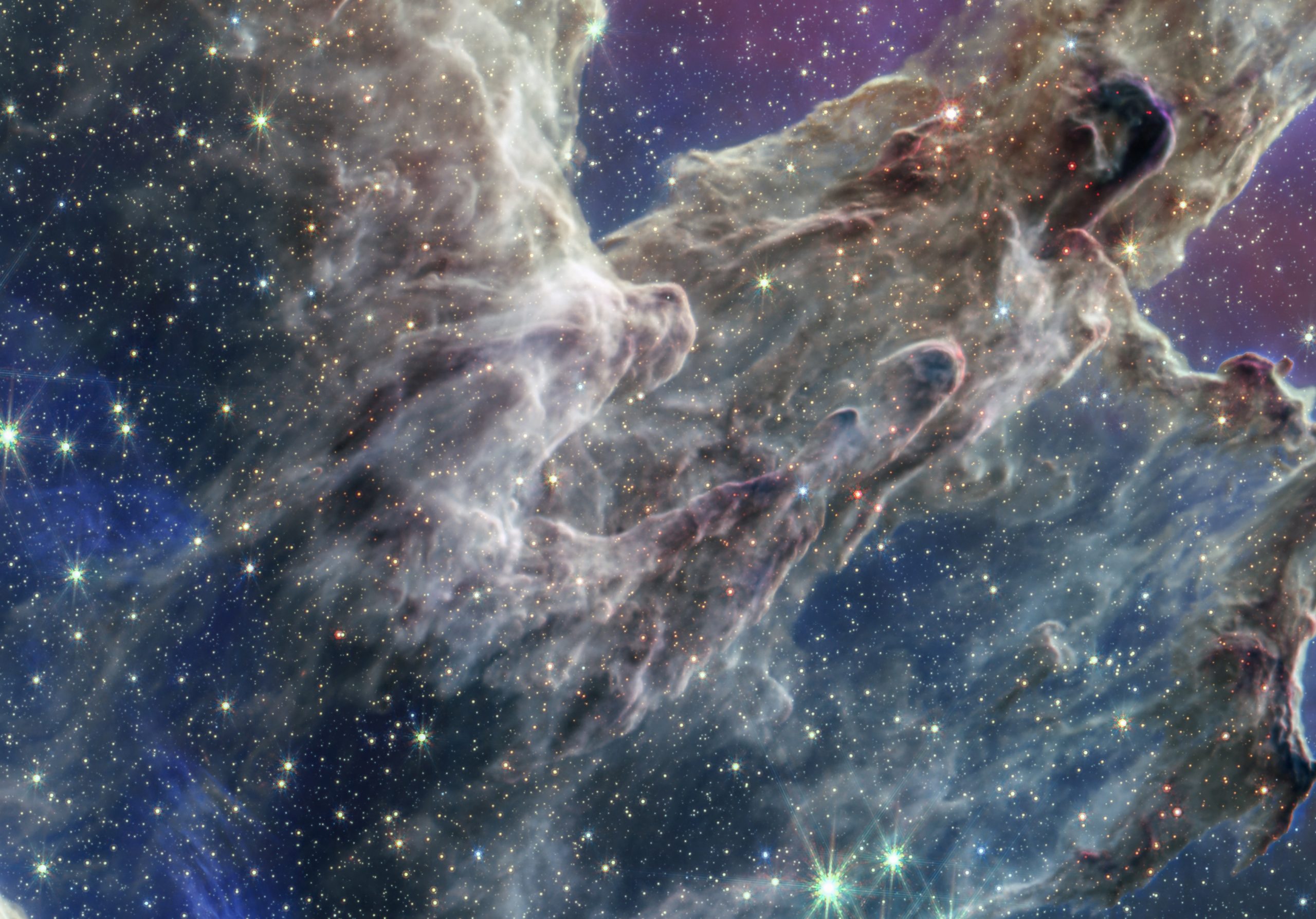Before the observatory starts scientific operations that will disclose the wonders of the cosmos, NASA is getting ready to demonstrate what the James Webb Space Telescope is capable of by releasing the first color photographs from the observatory. The telescope’s 6.5-meter mirror opened after it was launched on Christmas morning, and its tennis-court-sized sun shield unfurled in outer space.
After commissioning, the telescope, which is now positioned around 1 million miles from Earth, is prepared to start scientific observations that have been planned for decades. On Tuesday, July 12 at 10:30 a.m. ET, NASA, the European Space Agency, and the Canadian Space Agency intend to make available the first full-color photographs and spectroscopic data from the James Webb Space Telescope.
Live streaming of the announcement will take place on NASA.gov and the social media channels of the organization. Take this as a polite reminder that on Tuesday, these well-prepared celestial visuals will be visible everywhere. Webb’s imaging team has already given brief samples of Webb’s capabilities, suggesting the next photographs will be noteworthy.
The first picture acquired after the “fine phasing” alignment of the Optical Telescope Element was made public in April by the space agency and its telescope partners. According to NASA Webb operations scientist Jane Rigby, the team behind Webb didn’t choose the star known as 2MASS J17554042+655127 for any specific scientific reason. Webb, however, found the star to be blindingly brilliant and a testimony to the telescope’s sensitivity even though it was a hundred times fainter than the light that the human eye could perceive.
Then, in May, the Mid-Infrared Instrument (MIRI) of the Webb telescope was tested using a picture of the Large Magellanic Cloud, a satellite galaxy of the Milky Way. After NASA’s Spitzer Space Telescope was decommissioned, its Infrared Array Camera was replaced by Webb’s MIRI.
Principal Investigator for Webb’s Near-Infrared Camera Marcia Rieke remarked in May, “Spitzer taught us a lot, but this is like a whole new universe, simply breathtakingly gorgeous.”
Before the big unveiling, NASA published a list of the cosmic objects that Webb will photograph in its first observations. A global committee that included members from NASA, ESA, CSA, and the Space Telescope Science Institute selected the objects, the space agency claims.
The biggest and brightest nebula in the cosmos, the Carina Nebula, which is 7,600 light-years distant, and WASP-96 b, a gas exoplanet that is situated roughly 1,150 light-years from Earth, are both included in the James Webb Space Telescope’s first color photographs. The first JWST data release will also include information on the Southern Ring Nebula, a glowing gaseous cloud that surrounds a dead star. Finally, the observatory’s long field vision capabilities will be put to the test by Stephan’s Quintet, a collection of five compact galaxies in the Pegasus constellation, and SMACX 0723, a galaxy cluster.
Because of the perfect launch trajectory, the JWST mission management claims the telescope has enough fuel to continue operations for many decades.
The Hubble Space Telescope, which preceded it, is still in use after more than 30 years in an orbit 300 miles above Earth. After the first photographs were fuzzy, NASA astronauts carried out a number of spacewalks to fix a problem with the main mirror of the Hubble space telescope. A repair trip would be impossible since the James Webb Space Telescope telescope is roughly 1 million miles from Earth. Thankfully, Webb’s first pictures were quite clear.
Source: FOX 10

